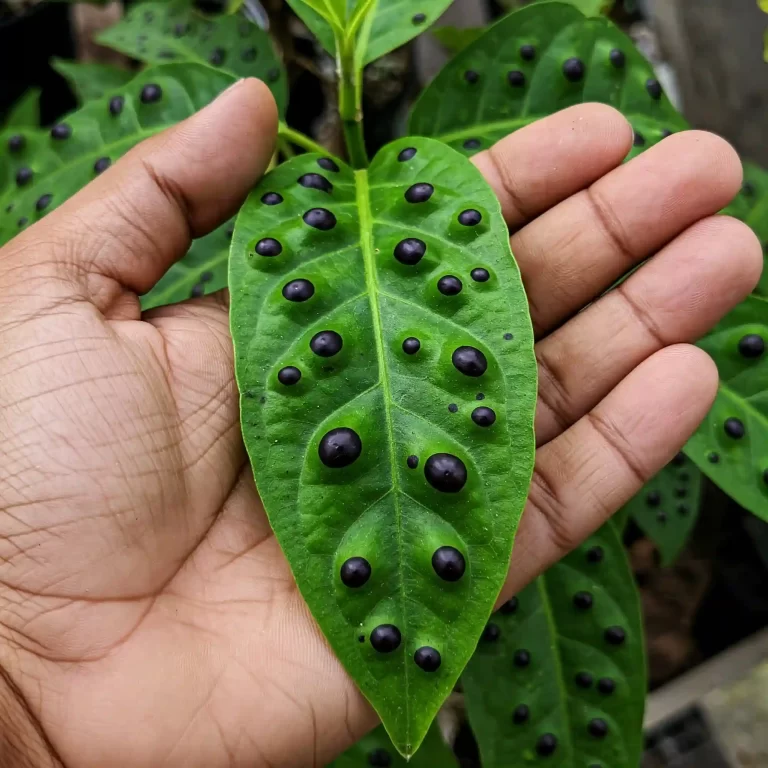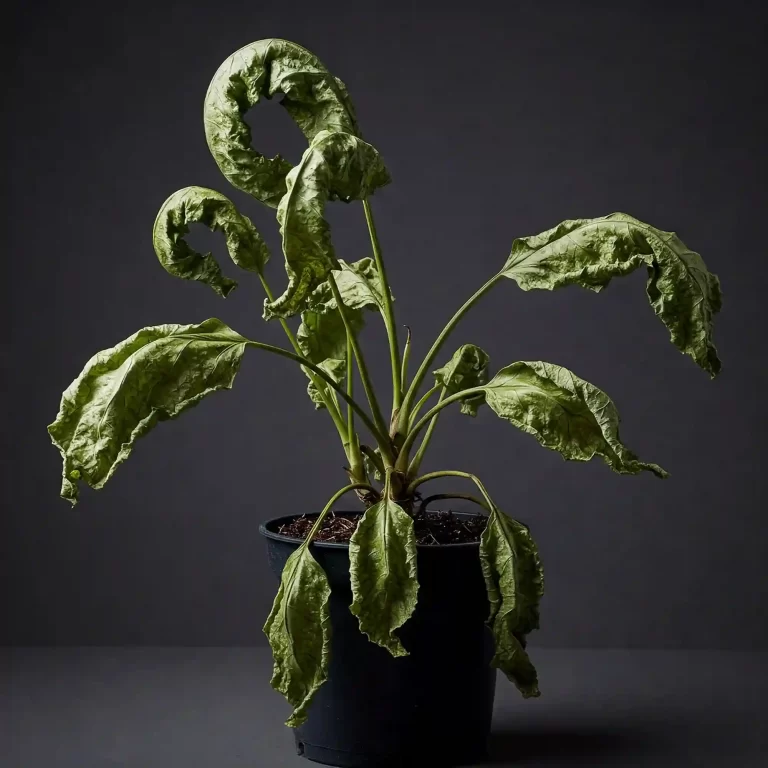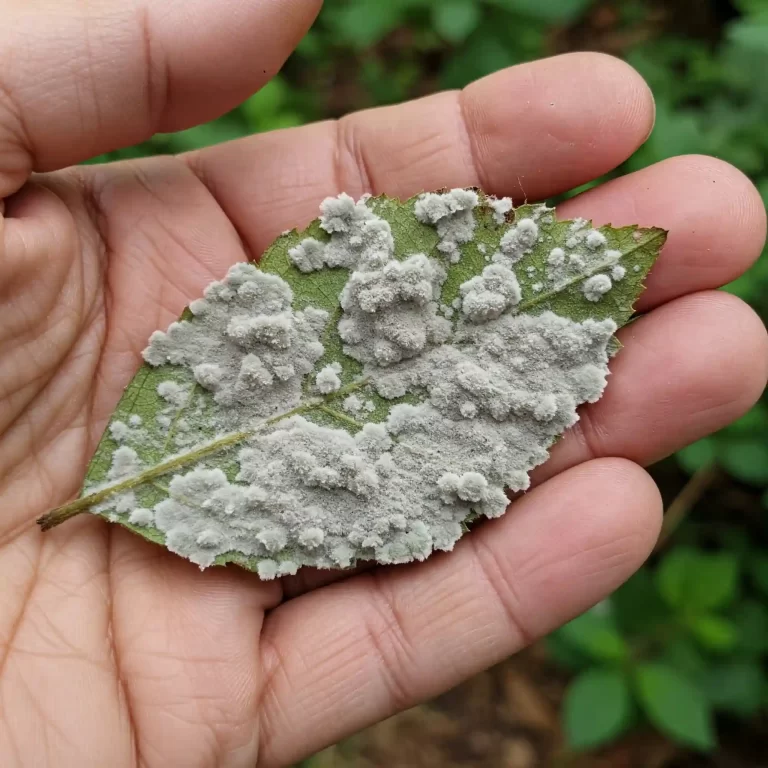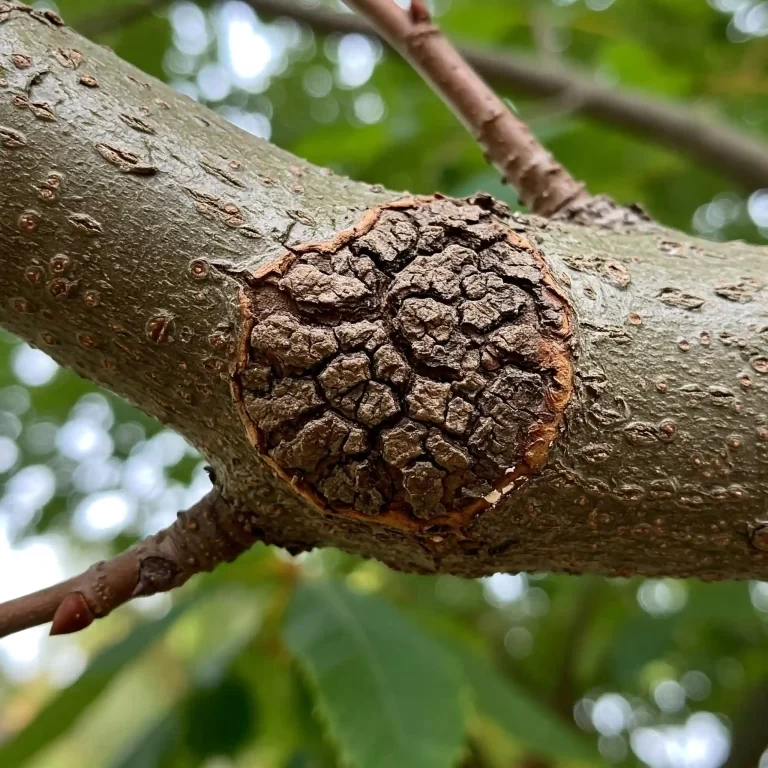Chilli thrips are a persistent and damaging pest that can wreak havoc on your garden. These tiny insects are notorious for their ability to cause significant damage to a wide range of plants, including vegetables, fruits, and ornamentals. If left unchecked, chilli thrips can lead to reduced crop yields, unsightly damage to plants, and even plant death.
Imagine spending months nurturing your garden, only to see your hard work destroyed by these tiny pests. The frustration of watching your plants suffer from wrinkled leaves, brown scarring, and stunted growth can be overwhelming. The financial impact of losing valuable crops and the time spent trying to control these pests can add to the stress.
Fortunately, there are effective ways to manage chilli thrips and protect your garden. In this comprehensive guide, we will explore 10 proven methods to identify, prevent, and control chilli thrips infestations. By following these strategies, you can keep your garden healthy and thriving, ensuring that your plants remain vibrant and productive.
1. What Are Chilli Thrips?
Chilli thrips, scientifically known as Scirtothrips dorsalis, are a significant pest that affects a wide range of crops, including vegetables, fruits, and ornamental plants. These tiny insects belong to the family Thripidae and are known for their invasive nature and broad host range. Chilli thrips are particularly troublesome because they feed on new growth, causing damage such as wrinkled leaves, brown scarring along the veins of leaves, buds of flowers, and the calyx of fruit.
Overview of Chilli Thrips
Chilli thrips are small, slender insects that measure about 1-2 millimeters in length. They have fringed wings and are typically pale yellow to dark brown in color. These pests are highly mobile and can be easily spread by wind, making them difficult to control. Chilli thrips are known to infest a wide variety of plants, including peppers, eggplants, mangoes, citrus, strawberries, grapes, cotton, tea, peanuts, blueberries, and roses.
Host Plants Affected by Chilli Thrips
Chilli thrips have a broad host range and can infest a wide variety of plants. Some of the most commonly affected crops include:
- Vegetables: Peppers, eggplants, tomatoes, cucumbers, and beans.
- Fruits: Mangoes, citrus, strawberries, grapes, and blueberries.
- Ornamentals: Roses, hibiscus, chrysanthemums, and gerberas.
- Other Crops: Cotton, tea, and peanuts.
The damage caused by chilli thrips can reduce the sale value of crops and, in severe cases, kill plants already stressed by environmental factors. Understanding the host plants affected by chilli thrips is crucial for effective pest management.
Importance of Managing Chilli Thrips
Effective management of chilli thrips is essential to protect your garden and ensure the health and productivity of your plants. By implementing integrated pest management (IPM) strategies, you can reduce the risk of infestations and minimize the damage caused by these pests. IPM involves a combination of cultural, biological, and chemical control methods to manage pest populations in an environmentally sustainable manner.
2. Identifying Chilli Thrips
Identifying chilli thrips is the first step in managing these pests effectively. Early detection and accurate identification can help you take timely action to prevent infestations from spreading and causing significant damage to your plants.
Physical Characteristics of Chilli Thrips
Chilli thrips are small, slender insects that measure about 1-2 millimeters in length. They have fringed wings and are typically pale yellow to dark brown in color. The adult thrips have a distinctive elongated body shape, with narrow wings that are fringed with long hairs. The larvae are smaller and lighter in color, often appearing translucent or pale yellow.
Signs of Infestation on Plants
Chilli thrips feed on new growth, causing damage such as wrinkled leaves, brown scarring along the veins of leaves, buds of flowers, and the calyx of fruit. Some common signs of chilli thrips infestation include:
- Wrinkled Leaves: Leaves may appear distorted, curled, or wrinkled due to feeding damage.
- Brown Scarring: Brown or silver scarring along the veins of leaves, buds, and fruit calyx.
- Stunted Growth: Infested plants may exhibit stunted growth and reduced vigor.
- Flower and Fruit Damage: Buds and flowers may be deformed, and fruit may have scarring or discoloration.
Comparison with Other Similar Pests
Chilli thrips can be easily confused with other similar pests, such as western flower thrips (Frankliniella occidentalis) and onion thrips (Thrips tabaci). However, there are some key differences that can help you distinguish chilli thrips from other thrips species:
- Size and Color: Chilli thrips are generally smaller and lighter in color compared to western flower thrips.
- Feeding Damage: Chilli thrips tend to cause more severe damage to new growth, while other thrips species may primarily affect flowers and fruit.
- Host Range: Chilli thrips have a broader host range and can infest a wider variety of plants compared to other thrips species.
Accurate identification is crucial for effective pest management, as different thrips species may require different control strategies.
3. Lifecycle and Behavior of Chilli Thrips
Understanding the lifecycle and behavior of chilli thrips is essential for effective pest management. By knowing the different stages of their lifecycle and their typical behavior, you can implement targeted control measures to reduce their populations and prevent infestations.
Stages of the Chilli Thrips Lifecycle
Chilli thrips undergo several stages in their lifecycle, including egg, larva, pupa, and adult. The entire lifecycle can be completed in as little as 12-20 days, depending on environmental conditions. Here is an overview of the different stages:
- Egg: Female chilli thrips lay eggs on the surface of leaves, buds, and flowers. The eggs are tiny and difficult to see with the naked eye. They hatch in about 2-4 days.
- Larva: The larvae are small, pale yellow, and wingless. They feed on new growth and cause significant damage to plants. The larval stage lasts about 5-10 days.
- Pupa: The larvae pupate in the soil or on the plant surface. The pupal stage lasts about 2-5 days.
- Adult: Adult chilli thrips emerge from the pupae and begin feeding and reproducing. They can live for several weeks and lay hundreds of eggs during their lifespan.
Typical Behavior and Feeding Habits
Chilli thrips are highly mobile and can be easily spread by wind, making them difficult to control. They prefer to feed on new growth, causing damage such as wrinkled leaves, brown scarring, and stunted growth. Chilli thrips are most active during warm, dry weather and can reproduce rapidly under favorable conditions.
Seasonal Patterns and Environmental Preferences
Chilli thrips thrive in warm, dry climates and are most active during the spring and summer months. They can survive in a wide range of environmental conditions, but their populations tend to increase during periods of warm, dry weather. Understanding the seasonal patterns and environmental preferences of chilli thrips can help you implement timely control measures to reduce their populations and prevent infestations.
4. Damage Caused by Chilli Thrips
Chilli thrips can cause significant damage to a wide range of plants, including vegetables, fruits, and ornamentals. The damage caused by these pests can reduce the sale value of crops, affect plant health, and even lead to plant death in severe cases.
Types of Damage to Leaves, Fruits, and Flowers
Chilli thrips feed on new growth, causing damage such as wrinkled leaves, brown scarring, and stunted growth. Some common types of damage caused by chilli thrips include:
- Wrinkled Leaves: Leaves may appear distorted, curled, or wrinkled due to feeding damage.
- Brown Scarring: Brown or silver scarring along the veins of leaves, buds, and fruit calyx.
- Stunted Growth: Infested plants may exhibit stunted growth and reduced vigor.
- Flower and Fruit Damage: Buds and flowers may be deformed, and fruit may have scarring or discoloration.
Visual Symptoms of Chilli Thrips Damage
The visual symptoms of chilli thrips damage can vary depending on the plant species and the severity of the infestation. Some common visual symptoms include:
- Leaf Distortion: Leaves may appear curled, wrinkled, or distorted due to feeding damage.
- Scarring and Discoloration: Brown or silver scarring along the veins of leaves, buds, and fruit calyx.
- Deformed Flowers and Fruit: Buds and flowers may be deformed, and fruit may have scarring or discoloration.
- Reduced Vigor: Infested plants may exhibit stunted growth and reduced vigor.
Impact on Crop Yield and Plant Health
The damage caused by chilli thrips can have a significant impact on crop yield and overall plant health. Infested plants may produce fewer flowers and fruits, leading to reduced harvests. The quality of the produce may also be compromised, with visible scarring and deformities making the fruits and vegetables less marketable. In severe cases, chilli thrips infestations can weaken plants to the point where they become more susceptible to other pests and diseases, further exacerbating the damage.
Economic Impact on Farmers and Gardeners
The economic impact of chilli thrips infestations can be substantial for both commercial farmers and home gardeners. For farmers, reduced crop yields and lower-quality produce can lead to financial losses. The cost of implementing control measures, such as purchasing pesticides or biological control agents, can also add to the financial burden. Home gardeners may experience frustration and disappointment as their carefully tended plants suffer from the damage caused by chilli thrips.
Case Study: Chilli Thrips Infestation in a Commercial Pepper Farm
A commercial pepper farm in Florida experienced a severe chilli thrips infestation that significantly impacted their crop yield. The farm had to implement an integrated pest management (IPM) strategy that included regular monitoring, the use of biological control agents, and targeted pesticide applications. Despite these efforts, the infestation resulted in a 30% reduction in yield and a noticeable decrease in the quality of the peppers. This case study highlights the importance of early detection and proactive management to minimize the impact of chilli thrips on crop production.
5. Preventing Chilli Thrips Infestations
Preventing chilli thrips infestations is crucial for maintaining a healthy garden and protecting your plants from damage. By implementing a combination of cultural practices and regular monitoring, you can reduce the risk of infestations and keep chilli thrips populations under control.
Cultural Practices to Reduce the Risk of Infestation
Cultural practices play a vital role in preventing chilli thrips infestations. Some effective cultural practices include:
- Crop Rotation: Rotate crops to disrupt the lifecycle of chilli thrips and reduce their populations.
- Sanitation: Remove and destroy infested plant debris to eliminate potential breeding sites for chilli thrips.
- Mulching: Apply mulch around plants to create a barrier that prevents chilli thrips from reaching the soil and pupating.
- Water Management: Avoid overwatering, as excessive moisture can create favorable conditions for chilli thrips.
Tips for Maintaining a Healthy Garden Environment
Maintaining a healthy garden environment can help reduce the risk of chilli thrips infestations. Some tips for maintaining a healthy garden include:
- Healthy Soil: Ensure that your soil is well-drained and rich in organic matter to promote healthy plant growth.
- Proper Spacing: Space plants appropriately to improve air circulation and reduce humidity levels, which can deter chilli thrips.
- Regular Pruning: Prune plants regularly to remove damaged or infested growth and promote healthy new growth.
- Beneficial Insects: Encourage beneficial insects, such as ladybugs and predatory mites, that prey on chilli thrips.
Importance of Regular Monitoring and Maintenance
Regular monitoring and maintenance are essential for early detection and prevention of chilli thrips infestations. By regularly inspecting your plants for signs of infestation and implementing timely control measures, you can prevent small infestations from becoming severe. Some monitoring techniques include:
- Visual Inspections: Regularly inspect plants for signs of chilli thrips damage, such as wrinkled leaves and brown scarring.
- Sticky Traps: Use yellow sticky traps to monitor chilli thrips populations and detect early infestations.
- Sampling: Collect and examine plant samples to identify the presence of chilli thrips and assess the severity of the infestation.
6. Natural Remedies for Chilli Thrips
Natural remedies can be an effective and environmentally friendly way to manage chilli thrips infestations. By using organic and non-chemical control methods, you can reduce the risk of pesticide resistance and minimize the impact on beneficial insects and the environment.
Organic and Non-Chemical Control Methods
There are several organic and non-chemical control methods that can help manage chilli thrips infestations. Some effective methods include:
- Neem Oil: Neem oil is a natural insecticide that can be used to control chilli thrips. It works by disrupting the feeding and reproductive processes of the pests.
- Insecticidal Soaps: Insecticidal soaps can be used to kill chilli thrips on contact. They work by breaking down the protective outer layer of the insects, causing them to dehydrate and die.
- Horticultural Oils: Horticultural oils, such as mineral oil or canola oil, can be used to smother chilli thrips and prevent them from feeding on plants.
Benefits and Limitations of Natural Remedies
Natural remedies offer several benefits for managing chilli thrips infestations. They are generally safer for the environment and non-target organisms, including beneficial insects. Additionally, natural remedies can reduce the risk of pesticide resistance and provide a sustainable approach to pest management. However, there are some limitations to consider:
- Effectiveness: Natural remedies may be less effective than chemical pesticides, especially in severe infestations.
- Application Frequency: Natural remedies often require more frequent applications to maintain their effectiveness.
- Cost: Some natural remedies, such as neem oil and horticultural oils, can be more expensive than chemical pesticides.
Case Study: Using Neem Oil to Control Chilli Thrips
A home gardener in California successfully managed a chilli thrips infestation using neem oil. The gardener applied neem oil to the affected plants every 7-10 days, focusing on the new growth where chilli thrips were most active. After several weeks of consistent treatment, the infestation was brought under control, and the plants began to recover. This case study demonstrates the effectiveness of neem oil as a natural remedy for chilli thrips.
7. Chemical Control Methods
Chemical control methods can be an effective way to manage chilli thrips infestations, especially in severe cases. However, it is essential to use chemical pesticides responsibly and follow safe application practices to minimize the impact on the environment and non-target organisms.
Overview of Chemical Pesticides Effective Against Chilli Thrips
Several chemical pesticides are effective against chilli thrips. Some commonly used pesticides include:
- Spinosad: Spinosad is a natural insecticide derived from soil bacteria. It is effective against chilli thrips and has a low impact on beneficial insects.
- Abamectin: Abamectin is a broad-spectrum insecticide that targets a wide range of pests, including chilli thrips. It works by disrupting the nervous system of the insects.
- Imidacloprid: Imidacloprid is a systemic insecticide that is absorbed by the plant and kills chilli thrips when they feed on the treated plant.
Safe Application Practices and Precautions
When using chemical pesticides, it is essential to follow safe application practices and take necessary precautions to protect yourself, the environment, and non-target organisms. Some tips for safe pesticide application include:
- Read the Label: Always read and follow the label instructions for the pesticide you are using.
- Protective Gear: Wear protective gear, such as gloves, goggles, and a mask, to minimize exposure to the pesticide.
- Application Timing: Apply pesticides during the early morning or late evening when beneficial insects are less active.
- Avoid Overuse: Use pesticides sparingly and only when necessary to reduce the risk of pesticide resistance.
Potential Risks and Environmental Impact
While chemical pesticides can be effective in managing chilli thrips, they also pose potential risks to the environment and non-target organisms. Some potential risks include:
- Pesticide Resistance: Overuse of chemical pesticides can lead to the development of pesticide-resistant chilli thrips populations.
- Impact on Beneficial Insects: Chemical pesticides can harm beneficial insects, such as pollinators and natural predators of chilli thrips.
- Environmental Contamination: Pesticides can contaminate soil, water, and air, leading to environmental pollution and potential harm to wildlife.
8. Biological Control Agents
Biological control agents can be an effective and environmentally friendly way to manage chilli thrips infestations. By introducing natural predators and parasites of chilli thrips, you can reduce their populations and minimize the need for chemical pesticides.
Introduction to Beneficial Insects That Prey on Chilli Thrips
Several beneficial insects prey on chilli thrips and can help control their populations. Some commonly used biological control agents include:
- Predatory Mites: Predatory mites, such as Amblyseius swirskii and Neoseiulus cucumeris, feed on chilli thrips larvae and adults.
- Ladybugs: Ladybugs, particularly the species Stethorus punctillum, are effective predators of chilli thrips.
- Minute Pirate Bugs: Minute pirate bugs (Orius spp.) are small predatory insects that feed on chilli thrips and other small pests.
Examples of Biological Control Agents
Biological control agents can be introduced into your garden to help manage chilli thrips infestations. Some examples of biological control agents include:
- Amblyseius swirskii: A predatory mite that feeds on chilli thrips larvae and adults. It is commonly used in greenhouse and field crops.
- Neoseiulus cucumeris: Another predatory mite that is effective against chilli thrips. It is often used in combination with other biological control agents.
- Orius insidiosus: A minute pirate bug that preys on chilli thrips and other small pests. It is commonly used in vegetable and ornamental crops.
Integrating Biological Control into Pest Management Strategies
Integrating biological control agents into your pest management strategy can help reduce chilli thrips populations and minimize the need for chemical pesticides. Here are some steps to effectively integrate biological control:
- Selection of Agents: Choose appropriate biological control agents based on the specific needs of your garden and the severity of the chilli thrips infestation.
- Release Timing: Release biological control agents at the right time, ideally when chilli thrips populations are low to moderate. This allows the beneficial insects to establish and effectively control the pest population.
- Habitat Enhancement: Create a favorable environment for beneficial insects by providing shelter, food sources, and suitable microclimates. Planting a diverse range of flowering plants can attract and support natural predators.
- Monitoring and Evaluation: Regularly monitor the effectiveness of biological control agents and adjust your strategy as needed. This may involve periodic releases of additional agents or combining biological control with other pest management methods.
Case Study: Successful Biological Control of Chilli Thrips in a Greenhouse
A greenhouse grower in Texas successfully managed a chilli thrips infestation using a combination of predatory mites (Amblyseius swirskii) and minute pirate bugs (Orius insidiosus). The grower released the predatory mites early in the growing season and supplemented with minute pirate bugs as needed. By maintaining a diverse range of flowering plants and regularly monitoring pest populations, the grower was able to keep chilli thrips under control without relying on chemical pesticides. This case study highlights the effectiveness of biological control agents in managing chilli thrips infestations.
9. Monitoring and Early Detection
Monitoring and early detection are critical components of an effective chilli thrips management strategy. By regularly inspecting your plants and using monitoring tools, you can detect infestations early and take timely action to prevent them from spreading.
Techniques for Monitoring Chilli Thrips Populations
There are several techniques for monitoring chilli thrips populations in your garden:
- Visual Inspections: Regularly inspect plants for signs of chilli thrips damage, such as wrinkled leaves, brown scarring, and stunted growth. Pay close attention to new growth, as this is where chilli thrips are most likely to feed.
- Sticky Traps: Use yellow sticky traps to monitor chilli thrips populations. Place the traps near susceptible plants and check them regularly for the presence of thrips.
- Sampling: Collect and examine plant samples to identify the presence of chilli thrips. This can involve shaking plants over a white surface to dislodge thrips or using a hand lens to inspect leaves and buds.
Tools and Methods for Early Detection
Early detection of chilli thrips infestations can help you take timely action to prevent severe damage. Some tools and methods for early detection include:
- Hand Lenses: Use a hand lens or magnifying glass to inspect plants for the presence of chilli thrips. This can help you identify small infestations before they become widespread.
- Beating Trays: Use a beating tray to collect thrips from plants. Gently tap or shake the plants over the tray to dislodge thrips, making them easier to identify and count.
- Monitoring Software: Utilize pest monitoring software or apps to track chilli thrips populations and record observations. This can help you identify trends and make informed decisions about pest management.
Importance of Timely Intervention to Prevent Severe Infestations
Timely intervention is crucial for preventing severe chilli thrips infestations. By detecting infestations early and implementing control measures promptly, you can reduce the risk of significant damage to your plants. Some key steps for timely intervention include:
- Regular Monitoring: Conduct regular inspections and monitoring to detect chilli thrips early.
- Immediate Action: Take immediate action when an infestation is detected, using appropriate control methods such as natural remedies, chemical pesticides, or biological control agents.
- Integrated Pest Management (IPM): Implement an integrated pest management strategy that combines cultural, biological, and chemical control methods to effectively manage chilli thrips populations.
10. Final Tips for Managing Chilli Thrips
Managing chilli thrips requires a comprehensive and proactive approach. By following the strategies outlined in this guide, you can effectively control chilli thrips infestations and protect your garden. Here are some final tips to help you manage chilli thrips:
- Stay Informed: Keep up-to-date with the latest research and developments in chilli thrips management. This can help you stay ahead of potential infestations and implement the most effective control methods.
- Be Proactive: Regularly monitor your plants and take preventive measures to reduce the risk of chilli thrips infestations. Early detection and timely intervention are key to successful pest management.
- Use Integrated Pest Management (IPM): Implement an integrated pest management strategy that combines cultural, biological, and chemical control methods. This holistic approach can help you manage chilli thrips populations sustainably and effectively.
- Seek Professional Advice: If you are struggling to manage a chilli thrips infestation, consider seeking advice from a professional pest management expert. They can provide tailored recommendations and support to help you protect your garden.
Additional Resources for Further Reading
For more information on chilli thrips and pest management, consider exploring the following resources:
- University Extension Services: Many universities offer extension services that provide valuable information and resources on pest management.
- Gardening Books and Publications: There are numerous books and publications available that cover various aspects of gardening and pest management.
- Online Forums and Communities: Join online gardening forums and communities to connect with other gardeners and share tips and experiences.
Conclusion
Chilli thrips are a persistent and damaging pest that can significantly impact your garden. By understanding their lifecycle, behavior, and the damage they cause, you can implement effective strategies to manage and control chilli thrips infestations. Whether you choose natural remedies, chemical control methods, or biological control agents, a comprehensive and proactive approach is essential for protecting your plants and ensuring a healthy garden.
Remember to stay informed, be proactive, and use integrated pest management strategies to keep chilli thrips populations under control. By following the tips and recommendations outlined in this guide, you can enjoy a thriving and productive garden free from the damage caused by chilli thrips.
This comprehensive guide provides detailed information on managing chilli thrips, covering all aspects from identification and lifecycle to prevention and control methods. By following the strategies outlined in this guide, you can effectively protect your garden and ensure the health and productivity of your plants. If you have any further questions or need additional assistance, feel free to reach out for support. Happy gardening!




